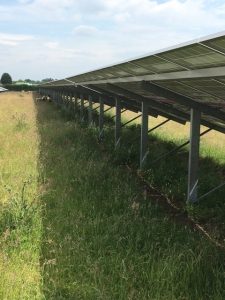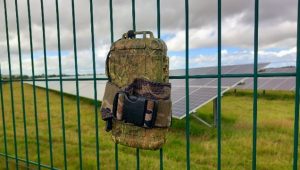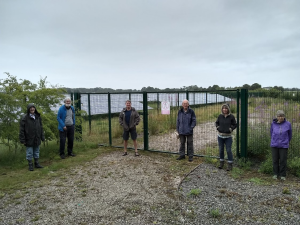At Shropshire and Telford Community Energy we believe that climate breakdown and the biodiversity crisis are two sides of the same coin – we can’t address one without addressing the other. That’s why we are working with partners to establish a biodiversity baseline for the site and also an enhancement strategy to ensure Twemlows Solar Farm can make a meaningful contribution to nature’s recovery.

The UKs “State of Nature Report” shows that the UKs biodiversity is declining at an alarming rate with a 60% decline in biodiversity across the UK since the 1970s. Furthermore, with our global energy demand set to increase by 30% by 2040, ensuring the way we generate energy supports and enhances the natural environment has never been more important.
Luckily, there is a growing body of scientific evidence showing how well-designed and well-managed solar farms can support wildlife and contribute to achieving national biodiversity targets.
So far, we’ve collated existing survey reports, assessed the condition of the hedgerows, undertaken breeding bird surveys and established a strategy to monitor the local bat population. We are developing our improvement plans, including enhancements to our hedgerows, pollinator resource and resident skylarks. We are also identifying partners to work with when delivering these enhancements including the Shropshire Wildlife Trust.
As well as this, we’re looking to share our findings with the wider network of community energy groups in the UK. We have approached Community Energy England and a number of individual organisations to explore establishing a “Community Energy and Biodiversity” working group as a way to share best practice and raise standards.

What makes us unique is that, unlike many other commercial solar farms, our contribution to nature’s recovery doesn’t have to stop at our fenceline. Our business plan is projecting a Community Benefit Fund of around £3 million over the next 18 years. If only a small amount of this funding is used to unlock funding for wider landscape conservation scale projects, Twemlows Solar Farm could become a major driver for Nature Recovery across Shropshire and Telford.

If you’re keen to learn more about the work we are doing to enhance the sites biodiversity, or would like to register with us as a volunteer for future habitat management events – please contact Mark at naturebasedlatham@gmail.com.
Solar power, farming and biodiversity
Solar power can be a rooftop and land-based energy system. It can use land to generate power cleanly and cheaply. Concerns have been raised about how much land in Britain would be needed for solar, along with linked issues about impacts on biodiversity and food security.
The video below addresses these issues directly.
